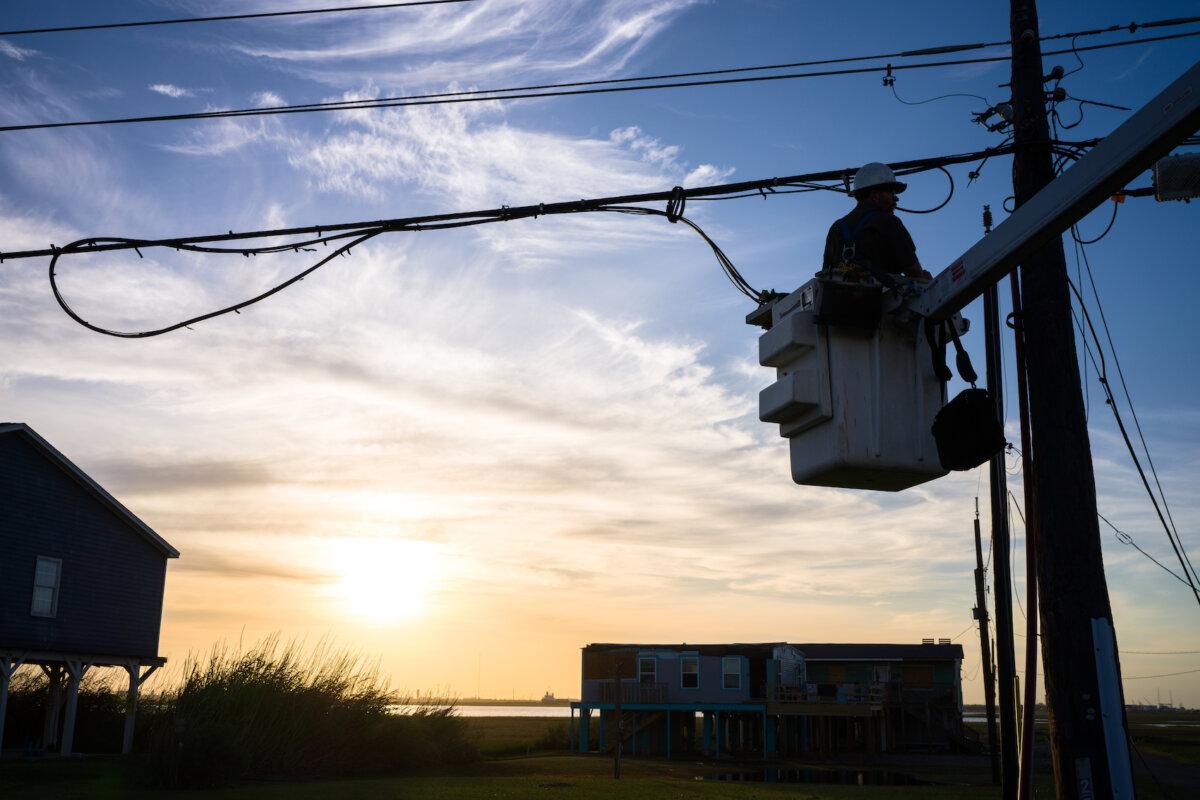Utilities along the Gulf of Mexico to New England are preparing for a stormy summer as Hurricane Beryl made landfall in Texas on July 8, causing widespread damage and power outages. Despite tracking the storm for several days, the impact was still severe, with at least eight casualties and millions without power.
CenterPoint Energy, the largest electrical utility in the region, is working to restore power to over 1 million customers by July 10 with the help of 12,000 linemen and technicians. Mobile generation units are being provided to essential facilities until power is fully restored.
Hurricanes are a common threat in the Gulf coast, but the intensity and frequency of storms are increasing. The 2024 hurricane season is expected to be above normal, with more named storms and hurricanes than in previous years. Hurricane Beryl, a Category 1 storm with winds reaching Category 5, highlights the unpredictability of hurricanes and the need for better planning and infrastructure.
A study by researchers at the Pacific Northwest National Laboratory and the Electric Power Research Institute shows that areas like Houston are at a higher risk of extended power outages from future hurricanes. Florida, in particular, faces significant vulnerabilities, requiring utilities to invest in infrastructure hardening and response training.
Florida Power & Light (FPL) President and CEO Armando Pimentel emphasized the need for more conservative planning and investment in preparation for stronger and more frequent storms. The challenges of balancing preparedness and cost in the face of unpredictable hurricanes are becoming more complex for utility companies across the region. Collins said.
Responding to hurricane-induced outrages presents challenges, as utilities in neighboring states are reluctant to send mutual aid crews to Florida due to the risk of another storm hitting while they are assisting with a disaster elsewhere.
According to Duke Energy Florida President Melissa Seixas, organizing an emergency response mutual aid effort is akin to “literally staging an army,” with the host utility responsible for providing housing, food, and services for the incoming linemen and technicians.
Duke Energy, which operates electric utilities in several states, including South Carolina, North Carolina, Kentucky, Ohio, and Indiana, can utilize its own workforce to support Florida during emergencies, and vice versa.
Preparing for Future Storms
Duke, headquartered in Charlotte, North Carolina, is one of the mutual aid utilities sending workers to Texas following Hurricane Beryl.
“Approximately 130 Duke Energy Florida lineworkers and personnel, along with around 100 contractors from the Carolinas, were deployed to Texas to assist with power restoration efforts alongside our mutual assistance partners,” said Duke Corporate Communications Manager Caroline Fountain in an email to The Epoch Times on July 9.
Regarding how long they will remain in Texas, Fountain mentioned that it’s “a good question.”

In 2023, Duke reported that “self-healing technology helped prevent over 1.5 million customer outages, saving more than 3.6 million hours of total outage time across the company’s service area spanning six states.”
The company recently completed a multi-year modernization of seven new grid control centers, as announced in June.
While FPL, a subsidiary of NextEra Energy serving 12 million customers in Florida, did not respond to inquiries from The Epoch Times on July 9, it has made significant investments in strengthening its energy grid to better withstand storms and minimize outage durations.
These investments include implementing “smart grid” technology, burying power lines, and upgrading transmission structures to steel or concrete as part of a long-term infrastructure strategy to enhance grid resilience.
In a drill conducted in May, FPL mobilized over 3,500 employees to simulate a Category 4 hurricane hitting Miami. They showcased a mobile command center capable of operating in heavily impacted areas and demonstrated the use of statewide smart grid technology to redirect power to critical areas post-storm.





